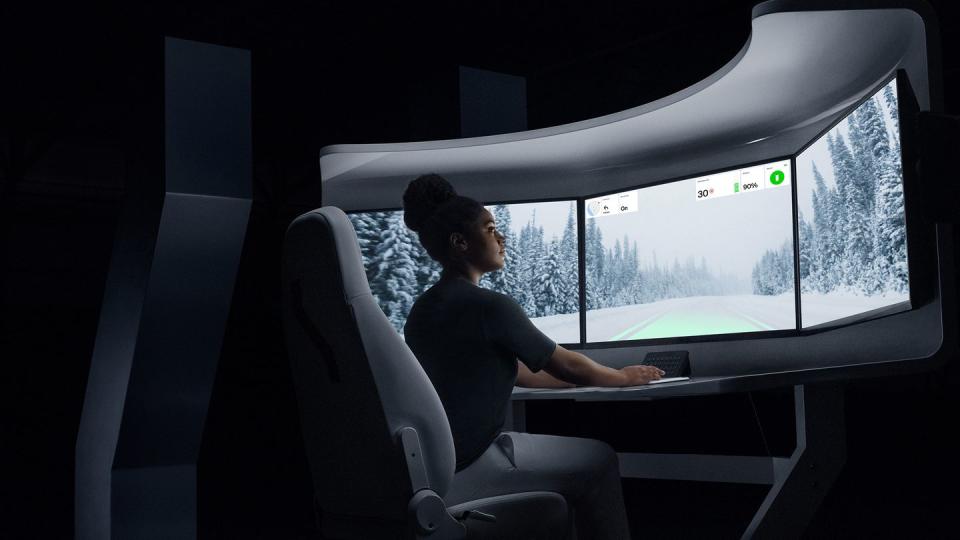Einride Gets NHTSA Nod to Test Driverless Trucks

Autonomous tech developer Einride has received NHTSA clearance to test its autonomous truck on US roads, with the prototypes set to work for GE Appliances.
The battery-electric Einride Pod is an SAE Level 4 autonomous vehicle, but also has a remote operator.
Several autonomous developers are currently testing trucks on routes between warehouses, with this type of route expected to be the first commercial use case for driverless trucks.
A few days ago autonomous truck developer Einride received official approval from the National Highway Traffic Safety Administration (NHTSA) to test its autonomous, electric truck prototypes on public roads, achieving an important milestone in its vision of an autonomous future. The Swedish company now can test its Autonomous Electric Transport (AET) for an actual customer: GE Appliances.
The driverless Einride Pod will still be monitored by a remote operator, who can assume control if needed, but it will otherwise be on its own on public roads, with the company testing it in mixed traffic. Einride plans to test the Pod in realistic workflows, operating between warehouses and coordinating with teams for loading and unloading cargo. The actual road trials will start in the third quarter of this year at a GE Appliances manufacturing facility.
"This is a type of vehicle that has never before been seen on US roads and marks a major milestone as a turning point for the future of the freight industry," said Robert Falck, CEO and founder at Einride. "We know the autonomous and electric technology of our pod will not only revolutionize transportation but also create thousands of jobs and help America stay competitive."
The Einride Pod is technically an SAE Level 4 autonomous vehicle, which means it's confined to a predetermined area or predetermined streets but can operate without a person behind the wheel, making it similar in this aspect to robotaxis currently working their way toward commercial operation in parts of several US cities. The use case that Einride and its competitors are pitching to companies is cargo traffic between warehouses or stores that are just a few minutes apart, instead of longer routes.

At their core, these efforts can certainly be described as seeking to replace commercial truck drivers with autonomous trucks, while creating a different type of job: coordinating a fleet of several trucks by a person sitting in front of a computer. Another type of job will involve recharging the electric trucks and performing maintenance at their home base.
Earlier this year at SXSW the company introduced trucking veteran Tiffany Heathcott as the world's first Remote Pod Operator, as the company calls this new position. Such operators will monitor the operation of several trucks simultaneously, effectively transforming the job of a truck driver into that of a remote monitor of operations.
"The Remote Pod Operators will observe and support an Einride Pod that is operating in automated drive mode to ensure they run optimally and safely as they ship goods on behalf of Einride’s customers," the company says. "Given the pods’ autonomous capabilities, the operators will not drive the vehicles but instead will be able to provide operational support to multiple pods at a time via their Automated Driving Systems, creating further efficiency that will ultimately allow for increased autonomy."
At the moment it's these types of routes of just a few miles between warehouses that are expected to be the first commercial use cases, with Walmart currently testing smaller trucks by one of Einride's competitors in real traffic. Perhaps in a few years we'll look back at these early tests as that moment when certain truck driver jobs began disappearing to automation.


